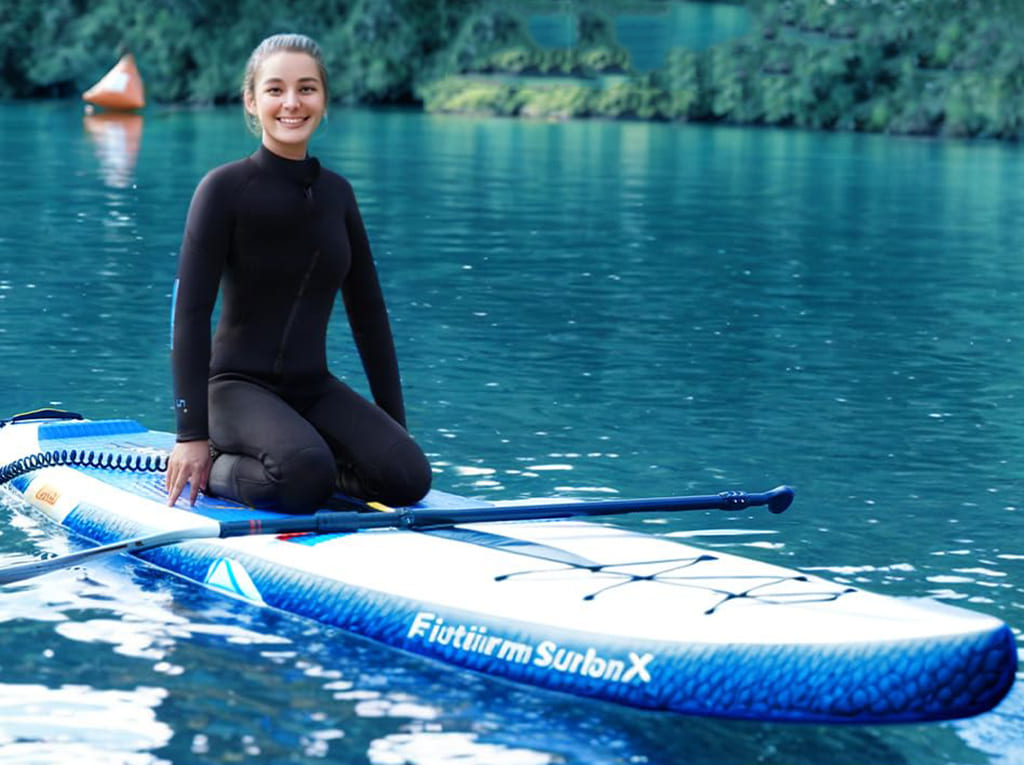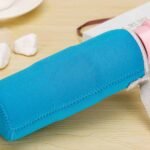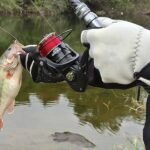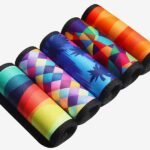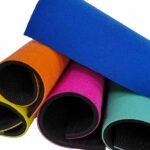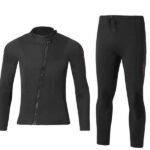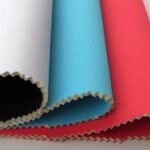When it comes to wetsuits, numbers like “3/2” might seem confusing at first glance. However, these figures play a crucial role in determining the wetsuit’s effectiveness, comfort, and intended use. Understanding what these numbers mean can help you select the right wetsuit for your needs and ensure you stay warm and protected in the water.
A 3/2 wetsuit refers to a wetsuit made with 3mm thick neoprene on the torso and 2mm thick neoprene on the arms and legs, designed to balance warmth and flexibility.
In the sections that follow, we’ll explore how a 3/2 wetsuit works, its ideal temperature range, how to choose the right thickness, and how it compares to other wetsuit thicknesses.
What is a 3/2 wetsuit?
A 3/2 wetsuit is named after the thickness of the neoprene used in different parts of the suit. The first number (3mm) refers to the thickness of the neoprene in the core areas—usually the chest and back—where warmth retention is critical. The second number (2mm) indicates the thickness of the neoprene in more flexible areas like the arms and legs, allowing for greater mobility.
A 3/2 wetsuit provides a balance between warmth in the torso and flexibility in the limbs, making it suitable for mild to moderately cool water conditions.
Benefits of a 3/2 Wetsuit
- Warmth where you need it: The thicker neoprene in the torso helps keep your body’s core warm.
- Flexibility in motion: The thinner neoprene in the arms and legs allows for easier paddling, swimming, and movement.
- Lightweight and comfortable: This thickness strikes a balance, offering enough warmth without feeling too bulky.
What temp is a 3/2 wetsuit for?
One of the most common questions about a 3/2 wetsuit is what water temperature it’s designed to handle. Generally, a 3/2 wetsuit is ideal for waters ranging from approximately 60°F (15°C) to 70°F (21°C). In cooler conditions, adding accessories like boots, gloves, and a hood can extend the suit’s comfort range.
A 3/2 wetsuit is typically suitable for mild water temperatures, ranging from 60°F (15°C) to 70°F (21°C).
Adjusting for Conditions
- Colder water: If the water is closer to 60°F, you may want to consider layering with a neoprene vest or thermal rash guard.
- Warmer water: For temperatures above 70°F, a thinner suit or a spring suit might be more comfortable.
- Winds and air temps: Remember that air temperature and wind can affect how cold you feel, so these factors may also influence your choice.
How is the thickness distributed in a 3/2 wetsuit?
The thickness in a 3/2 wetsuit isn’t uniform throughout the entire suit. Instead, the neoprene is strategically distributed to provide both warmth and flexibility. The torso, which is most responsible for retaining body heat, gets the thicker 3mm neoprene. The arms and legs use 2mm neoprene, offering the freedom of movement you need while swimming or paddling.
The 3mm neoprene is placed in the chest and back for warmth, while the 2mm neoprene is used in the arms and legs for flexibility.
Strategic Panel Placement
- Torso: Thicker panels here ensure your core stays warm, helping to maintain overall body temperature.
- Arms and shoulders: The thinner neoprene allows for full arm extension without resistance, essential for surfing or swimming.
- Legs: Flexibility in the legs helps with ease of movement when kicking or walking in the suit.
How to Choose Your Wetsuit Thickness
Selecting the right wetsuit thickness depends on the water temperature, your activity level, and your personal tolerance to cold. A 3/2 wetsuit is often a versatile choice for spring and fall conditions, but there are a few key factors to keep in mind when deciding.
Choosing the right wetsuit thickness involves considering water temperature, activity type, and your own comfort level.
Key Considerations
- Water temperature range: Match the suit’s thickness to the expected temperature. A 3/2 is great for mild conditions, while colder water may require a 4/3 or 5/4.
- Activity level: Higher intensity activities generate more body heat, meaning you might get by with a thinner suit.
- Personal cold tolerance: Some people feel the cold more than others. If you tend to get cold quickly, consider going a step thicker or adding thermal layers.
- Accessories: Adding boots, gloves, and hoods can make a thinner wetsuit feel warmer in cooler waters.
Wetsuit Thickness and Wetsuit Water Temperature Guide
Wetsuit thickness guides often include a range of temperatures for different thicknesses to help you choose the right suit. Here’s a general breakdown:
A 3/2 wetsuit is recommended for water temperatures between 60°F (15°C) and 70°F (21°C), while thicker wetsuits like a 4/3 or 5/4 handle colder conditions.
Thickness and Temperature Chart
| Wetsuit Thickness | Water Temperature Range | Accessories Needed |
|---|---|---|
| 3/2 | 60°F (15°C) – 70°F (21°C) | Optional boots or gloves |
| 4/3 | 50°F (10°C) – 60°F (15°C) | Boots, gloves recommended |
| 5/4 | 40°F (4°C) – 50°F (10°C) | Full gear: boots, gloves, hood |
By referencing a wetsuit temperature chart, you can more accurately choose a suit thickness that ensures warmth without sacrificing comfort and mobility.
What is the difference between a 3/2 and 4/3 wetsuit?
The primary difference between a 3/2 wetsuit and a 4/3 wetsuit is the thickness of the neoprene. A 4/3 wetsuit uses 4mm neoprene in the torso and 3mm in the limbs, offering more insulation for colder water temperatures. However, this added thickness can reduce flexibility compared to a 3/2.
A 4/3 wetsuit has thicker neoprene (4mm/3mm) for colder waters, while a 3/2 is lighter and more flexible, suitable for milder conditions.
Comparing 3/2 and 4/3 Wetsuits
| Feature | 3/2 Wetsuit | 4/3 Wetsuit |
|---|---|---|
| Warmth | Good for mild to moderately cool waters | Better for colder water conditions |
| Flexibility | Excellent flexibility for paddling | Slightly reduced flexibility |
| Weight | Lightweight and less restrictive | Heavier due to thicker neoprene |
| Temperature Range | 60°F (15°C) – 70°F (21°C) | 50°F (10°C) – 60°F (15°C) |
If you’re frequently in colder waters or have a lower tolerance for the cold, the added warmth of a 4/3 wetsuit might be worth the slight trade-off in flexibility. However, for moderate conditions, a 3/2 offers a comfortable balance.
Conclusion
A 3/2 wetsuit offers an ideal balance between warmth and flexibility, making it a popular choice for water temperatures ranging from 60°F (15°C) to 70°F (21°C). With its thicker neoprene panels on the torso and thinner panels on the limbs, it provides the insulation you need without restricting movement.
If you’re looking for a reliable and high-quality wetsuit, consider Szoneier. With years of expertise in neoprene wetsuit manufacturing, Szoneier delivers durable, comfortable, and customizable wetsuits that meet the demands of both casual and professional water sports enthusiasts.

